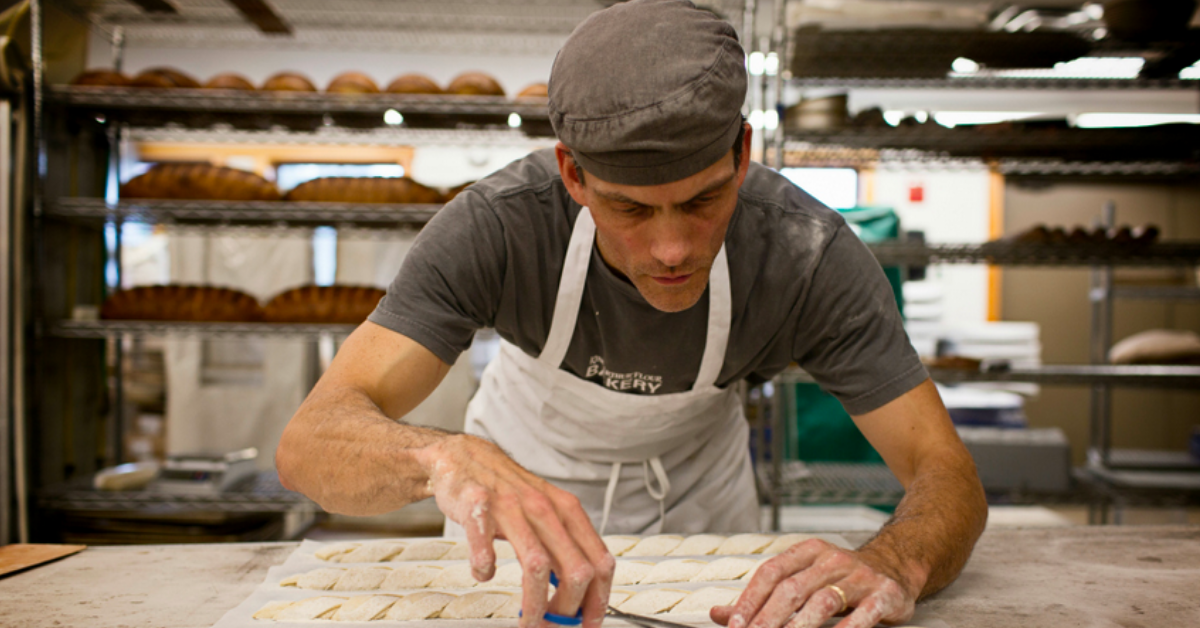‘Cannery Row in Monterey in California is a poem, a stink, a grating noise, a quality of light, a tone, a habit, a nostalgia, a dream. Cannery Row is the gathered and scattered, tin and iron and rust and splintered wood, chipped pavement and weedy lots and junk heaps, sardine canneries of corrugated iron, honky tonks, restaurants and whore houses, and little crowded groceries, and laboratories and flophouses. Its inhabitants are, as the man once said, “whores, pimps, gamblers and sons of bitches,” by which he meant everybody. Had the man looked through another peephole he might have said, “Saints and angels and martyrs and holymen” and he would have meant the same thing.’ – John Steinbeck, Cannery Row
I am on a virtual call with Vermont-based author Martin Philip, who was raised in Arkansas, studied music at Oberlin College, joined an investment bank in New York City, became head baker at King Arthur Flour in Vermont, and is now a Wall Street Journal bestselling author who hesitates to call himself a writer.
“I understand at a certain level the way in which things happen in the dough environment. I have a certain understanding of the syntax of it. It doesn’t mean I have mastered it. Like any craft, the more you crack it open, the more you see. Writing to me is similar to that. I’m not as far along in the process. I’m still very much trying to understand as a writer. I’m drawn to rhythm. I’m drawn to cadence. I’m drawn to description,” he says.
We are talking about the parallels in the creative process across art forms. To Philip, who is warm and engaging and nothing like his austere and guarded author profile image on Breaking Bread: A Baker’s Journey Home in 75 Recipes, Steinbeck’s opening passage in Cannery Row is the embodiment of good writing: the elevation of the raw, the dirty, the ordinary and the mundane into something compelling, universal and transformative through its beauty, rhythm, and the story it tells.
“If you read the opening of Cannery Row, it’s everything that I would aspire to do as a writer,” he remarks.
Like Philip’s work, our conversation about his creative process meanders. He speaks of his origins and his influences. He tells of his bicycle ride through Appalachia with a banjo on his back and ingredients in his basket to bake biscuits with strangers. He speaks of the enviable economy of poetry. Says Philip: “The ability to find those words that weigh a thousand pounds and to drop them on their head to describe an experience. I find inspiration there.”
In his speech and his writing, Philip has a rhythmic cadence, an ear that he says he developed listening to preachers speak at his church as a child in Arkansas. “Having that aural connection helped me,” he observes.
Throughout our hour-long conversation, Philip is personable and generous, with an openness and candor that suggests a willingness to take risks, to veer from the expected, to make mistakes.
“I didn’t call myself a baker for a long time. It’s something you have to earn,” he says.
To Philip, good writing, like good food, ultimately transcends. It takes all of us on a journey that transforms by allowing us to connect to what we as humans share. And while he may not yet be where he wants to be as a writer, his first book suggests he is well on his way.
Part memoir, part cookbook, part history, Breaking Bread: A Baker’s Journey Home in 75 Recipes is one man’s rhythmic, compelling, and storied exploration of the craft of baking and how through it we can better connect to our past, to what we share as a society, and to our inner selves.
*This post contains affiliate links




